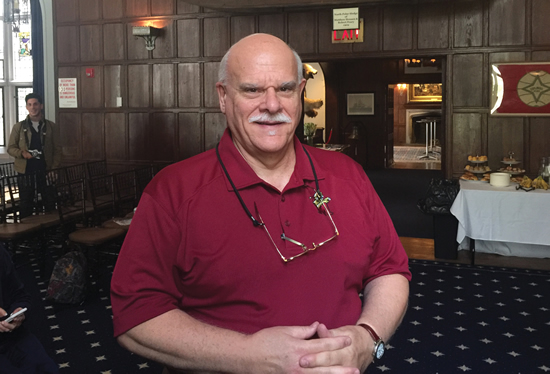My Working Life: “All Paths in Science Are Meandering”
By John T. Tanacredi, Ph.D.

John T. Tanacredi, Ph.D.
Beginning twelve years ago, to help a colleague who became very ill and subsequently passed away at a way too early age, I continue to host a special Saturday morning breakfast/lecture series by academicians I know, or work with, to talk to high school science students about how one gets to where they are in their careers. The “Saturday Science for Students at the Explorer’s Club” in Manhattan has reached out to budding scientists each Fall and Spring semester with one career talk per month, amounting to over 3,200 students participating to date. I bring this up in Education Update because authentic career guidance in the sciences was not available as I grew up in the 1960s in New York City. I tell these students that my path to my working life some 55 years into the making is definitely not a straight line. So, I share this with all readers interested in science and STEM careers for themselves, their students, and their children. As a 16-year-old growing up in a housing project in Brooklyn, I would walk to Coney Island to go fishing and to volunteer as a docent at the New York Zoological Society (today the Wildlife Conservation Society, or WCS), NY Aquarium in the Osborn Laboratories of Marine Sciences. That is where I started my science career journey. I met the director of the NY Aquarium, Dr. George Ruggieri, whose book The Healing Sea I read, and it was my first inspiration to be a scientist. I was a biology major and devoured anything in writing about science: William Bebees’ Half Mile Down, John & Mildred Teal’s Life and Death of a Salt Marsh, Rachael Carson’s Silent Spring, Thor Heyerdahl’s Kon Tiki; and René Dubos’ Man Adapting. I also watched “Mr. Wizard” on a black-and-white TV as well as all the Jacque Cousteau shows and films.
In 1967 I volunteered to serve in the US Navy and was set to a Weather Reconnaissance Squadron and flew as a aerographer’s mate (“Hurricane Hunter”) in the 1969/1970 hurricane seasons, and flew the tail end of 1969 Camille, one of only four Category 5 hurricanes recorded ever to make landfall in the continental United States. Camille had a landfall intensity of 150 knots (about 175 miles per hour); the storm surge west of Pass Christian, Mississippi was measured at 24.6 feet.
I was honorably discharged and went to complete my undergraduate Biology degree in 1972 under the GI Bill, and went to graduate school for Environmental Health Sciences under an HEW Fellowship. After completing the MS degree, I started working for the US Coast Guard in 1974 as an Environmental Administrator preparing environmental impact analyses/assessments for bridge and highway construction projects in six states on the east coast of the US. In 1978, I continued my career as a biologist with the National Park Service as a Research Scientist and subsequently received my PhD in 1988 from Polytechnic University (today the Tandon School of Engineering at NYU-Polytechnic) in Environmental Engineering. I worked on coastal environmental issues and had the unique opportunity to work on a World Heritage program specifically with the Chilean National Park system on Easter Island where a new species not previously known to science was identified in the 1,400 specimens collected on three expeditions to Easter Island. The species, now named Cryptopontius tanacredii, is one of my greatest honors!
I retired in 2000 from the National Park Service and started a fulltime academic career as Chairman of the Department of Earth and Marine Sciences at Dowling College, establishing what is today the CERCOM Field Station supporting the Earth and Environmental degree programs at Molloy College in Rockville Centre, New York. CERCOM is a seminal component to all natural sciences at Molloy College and is an interdisciplinary program emphasizing the research and conservation efforts I have worked with students since those early days as a docent at the NY Aquarium [on the study of] horseshoe crabs. I am now an integral member of the first Scientific Specialist Group for Horseshoe Crabs within the world’s largest conservation organization, The International Union for the Conservation of Nature (IUCN). CERCOM is the only Horseshoe Crab Aquaculture Facility in the U.S. and only one of two such academic centers globally, the other HSC breeding lab at Hong Kong City University. I have come full circle and today reveal to students the interconnections of all the sciences we explore, as we say at the Explorer’s Club, “from outer space, to inner space.” My life’s passion for horseshoe crabs has only been exceeded by my continued attempts to inspire students to pursue a career in science. I know it will be rewarding at every possible turn or bend in the road. #
John T. Tanacredi is Professor of Earth and Environmental Sciences in the Biology, Chemistry and Environmental Studies Department, and Director of CERCOM (Center for Environmental Research and Coastal Oceans Monitoring) at Molloy College, Rockville Centre, New York. He thanks all those who were inspirational to him, especially M. Schreibman, R. Cardenas and S. Hornstein.
